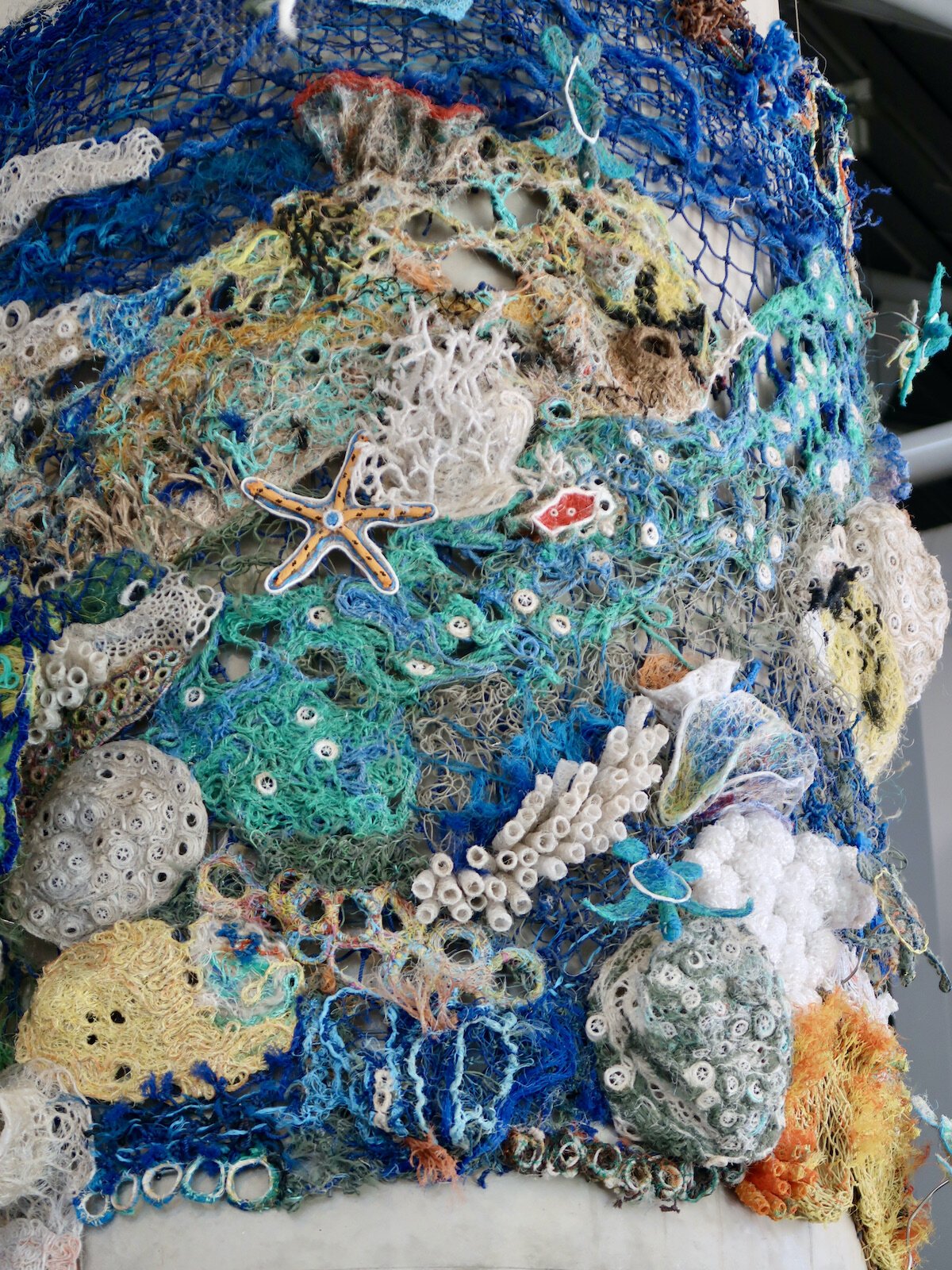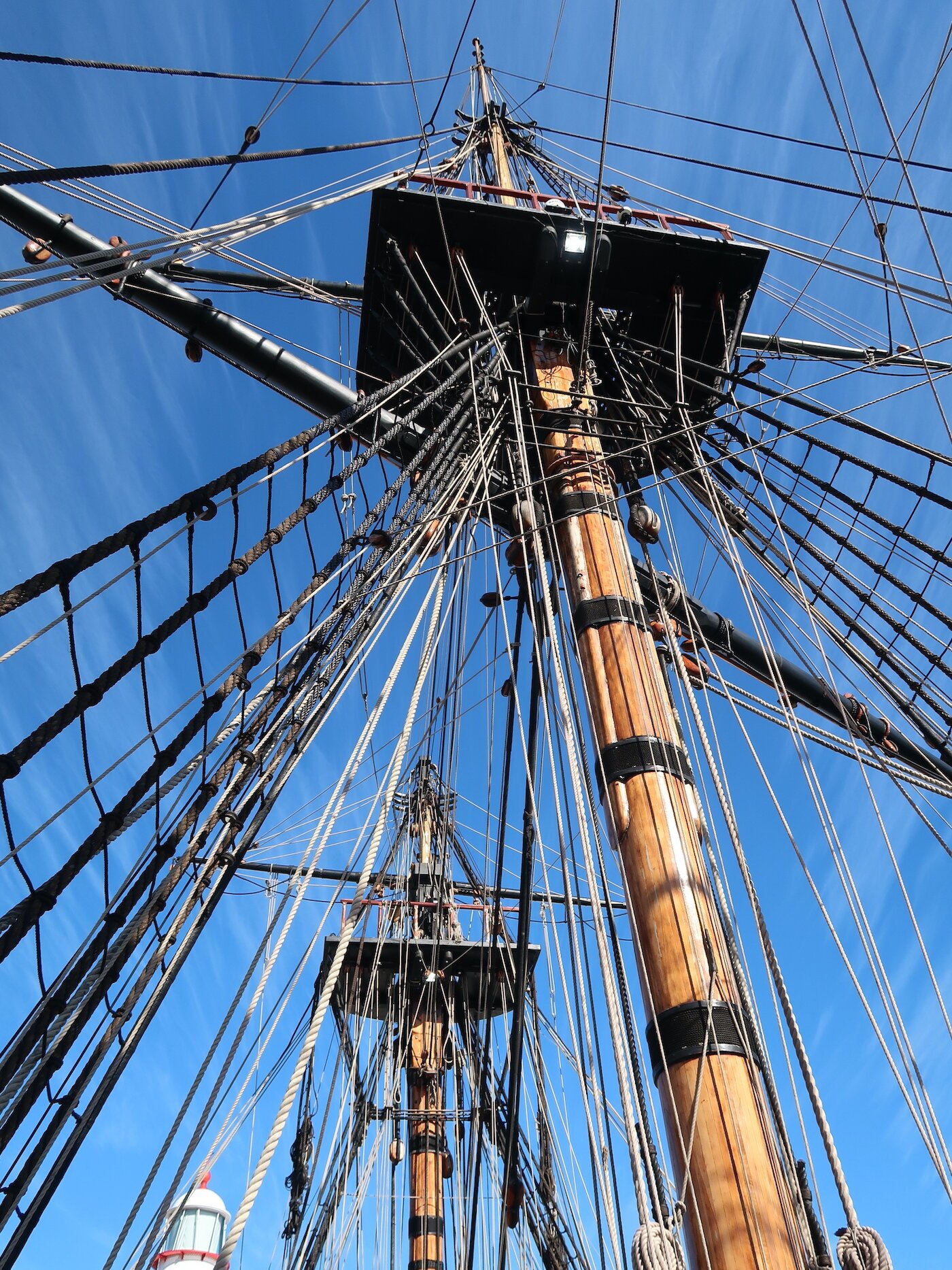The Maritime Museum
Truth be told, ships and maritime memorabilia aren’t really my thing. Which is why I was pleasantly surprised to find so many interesting things to see and do on a recent visit to the National Maritime Museum at Darling Harbour.
In fact I spent a few hours here, wondering the halls of the museum and visiting some of the ships docked in the adjacent harbour.
The museum is easily accessible. It’s just a short walk from the city or Wynyard Station, and Pyrmont Bay ferry wharf is just around the corner from the entrance.
The Museum
The Maritime Museum building was designed by Philip Cox as a federally funded bicentennial project, though its doors didn’t open until 1991. The waterside Warships Pavilion was added later in 2015 to commemorate 100 years of service by the Royal Australian Navy.
The museum interior is made up of six main galleries each with a special focus including navigation, immigration and First Nations. Action Stations is housed in the Waterside pavilion and focuses specifically on Australian naval history.
A shops sits within the building and there is a cafe outside. Play and craft spaces for children operate on the lower level and beside the cafe.
Permanent Collection
There’s a lot to a see and you’ll be guided by what takes your fancy or catches your eye. Apart form the huge ships outside there is a seahawk helicopter, a simulated submarine interior and Kay Cottee’s 11.2 metre yacht on which she circumnavigated the world, solo, becoming the first woman to do so.
My favourite installation at the museum would have to be the collection of ghost net sculptures that hangs at the entrance. The various sea creatures have been crafted from abandoned fishing nets using traditional weaving methods.
Surrounding the building on the waterfront are other permanent exhibits including several vessels, the Cape Bowling Green Lighthouse (currently closed for tours) and the The Welcome Wall which stands in honour of those who have migrated to Australia with registered names permanently engraved in bronze.
Special exhibitions
The museum hosts a number of special exhibitions throughout the year. Exhibitions cater to all ages and usually include additional focus areas and activities for children. See what’s on currently, here.
Marine life and the underwater environment are the focus of two current exhibitions (late 2021), Ocean Wonders and One Ocean - Our Future
The Natural History Museum’s Wildlife Photographer of the Year is a big draw card and definitely worth seeing (Until March 2022).
Online exhibitions are also accessible here.
The ships
The ships docked alongside the museum’s main building are some of its biggest draw cards. I recommend visiting these before entering the museum proper, as things get busy later in the day, especially once school and tour groups arrive.
There is a replica of the Endeavour on which James Cook “discovered” Australia in 1770, and one of the Dutch trading ship the Duyfken which reached Australian shores almost two hundred years earlier. Each is a full scale reproduction of its original, right down to the kitchen utensils, figureheads, paint colours and cramped spaces.
Stepping onto these boats is to step back in time. Onboard guides give an insight into what was life for the sailors and traders aboard these ships, how they lived for weeks and months at sea with very few creature comforts.
HMAS Vampire is a retired naval destroyer also open to the public for viewing and tours. It served in the Royal Australian Navy from 1959 to 1986. You can wander around many areas of the ship, peaking into kitchens, sleeping quarters and living areas that take you back to the seventies. Retired naval personnel are nearby to show you around and answer questions.
HMAS Onslow is a submarine, commissioned in 1969 and decommissioned in 1999. At the time of writing it was closed to the public, (Covid restrictions) but at other times, it’s a popular attraction offering a unique opportunity to explore life in a sub. An extra ticket ($25) is required to tour the Onslow.
In the area
The museum is centrally located on the edge of Darling harbour and Pyrmont.
Darling Harbour is also home to Sea Life Aquarium, Wild Life Sydney Zoo and the beautiful Chinese Gardens of Friendship. A short walk over the Pyrmont footbridge will take you into the centre of the city. Or if you keep walking north, you’ll soon reach Cockle Bay and beyond that, Barangaroo. Both offer plenty of options for waterside dining.
On the Pyrmont side beyond the museum you’ll find the Jones Bay Wharf, the Star Casino and the Sydney Fish Markets.


















